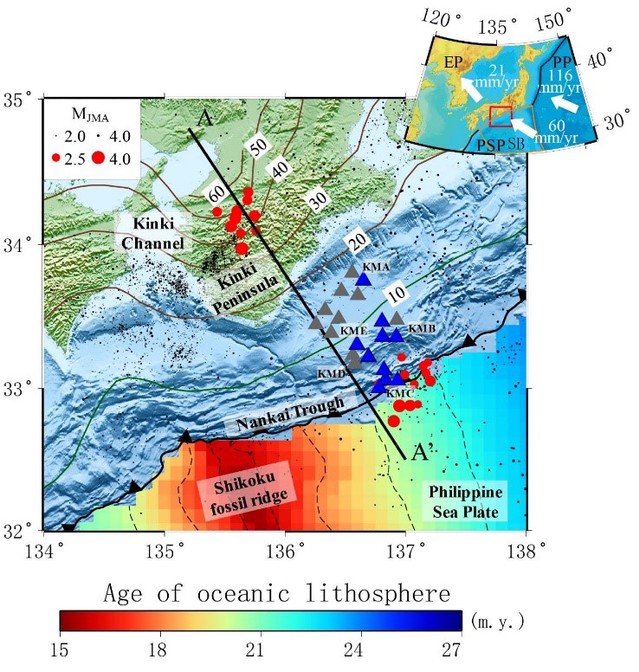Y. Liul, M. Xuel3, Z. Guo2, Ailan Zhu3
1State Key Laboratory of Marine Geology, Tongji University, Shanghai, China,200092.
2College of Civil Engineering, Tongii University, Shanghai, China,200092.
3Shanghai Sheshan National Geophysical Observatory, Shanghai, China.
Abstract
Anisotropy within subducted slabs carries important information about the deformation history of the slabs. Seismic waves propagating a long distance within a subducted slab can be utilized to invert for the slab anisotropy. The Dense Ocean Floor Network System(DONET) deployed near the Nankai trough are located in a suitable position to record seismic waves guided along the subducted northern Philippine Sea plate(nPSP).In this study, we perform the shear wave splitting analysis on local event data recorded by ocean bottom seismometers from DONET to measure the anisotropy within the subducting nPSP. The obtained fast axis is sub-trench-parallel with inferred strength of1-3% anisotropy, arising likely from the fossilized fabric formed during the seafloor spreading period and strengthened by trench-parallel serpentinized hydrated faults. This result show that the fossilized anisotropy of nPSP is preserved during the subduction.
Full Article:https://doi/abs/10.1029/2021GL096516



